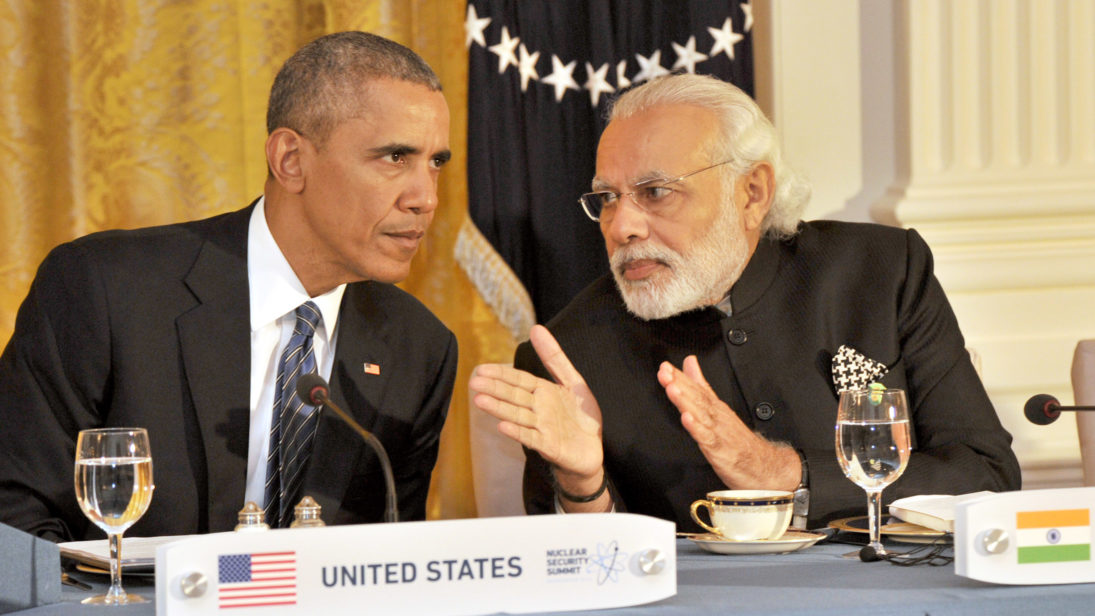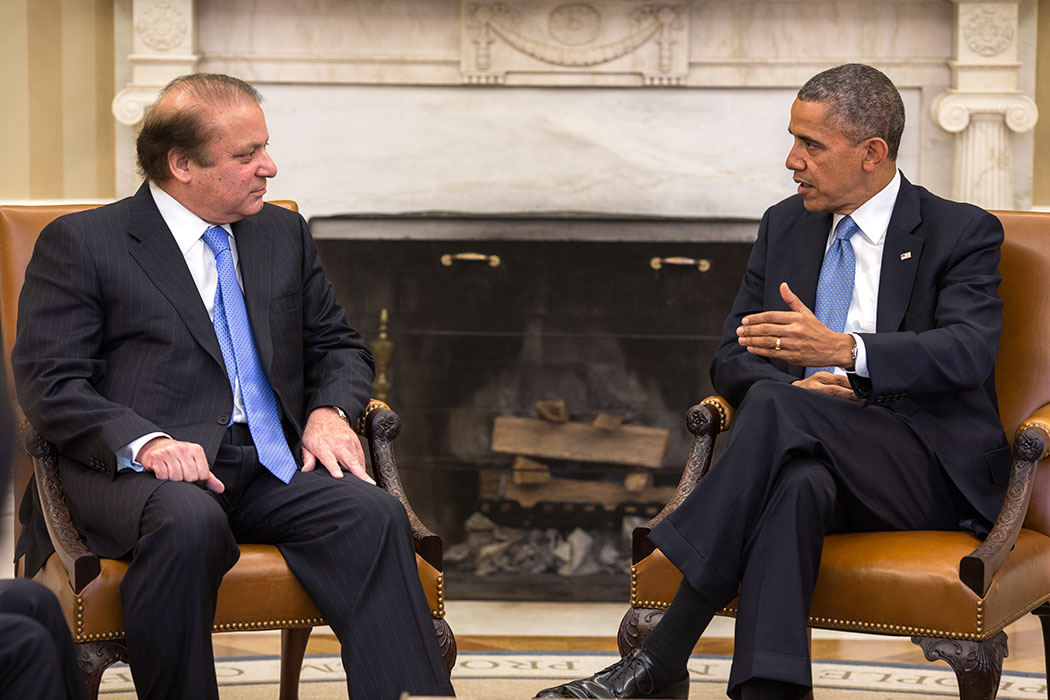
Of late, the troughs in Pakistan-United States relations have become even more frequent. The Obama administration is not happy with Pakistan’s handling of the Afghan Taliban and the Haqqani Network. Pakistan is concerned about the United States’ constant push for India’s Nuclear Suppliers Group bid and its strategic tilt towards New Delhi. This has led to a massive trust deficit and divergence of interests between Islamabad and Washington. Of particular concern to Pakistan have been fast-developing Indo-U.S. defense ties.
Growing U.S.-India Defense Relations
It is believed that a strong campaign by the Indian lobby in Washington, among other things, resulted in the blockade of a U.S. sale of F-16s and other military hardware to Pakistan. More importantly, during Indian Defense Minister Manohar Parrikar’s three-day visit to the United States in August, the two countries concluded a long-awaited bilateral deal called the Logistics Exchange Memorandum of Agreement (LEMOA). This will facilitate logistical and operational support between the U.S. and Indian militaries on a reimbursable basis, such as allowing them to use each other’s facilities for supplies and repairs. The United States and India have also agreed to co-produce and co-develop weapon systems under the Defense Technology and Trade Initiative (DTTI).
These developments need to be understood in the context of the evolving security milieu of South Asia, traditionally characterized by Indo-Pak rivalry. Until now, the Indian economic boom has been more beneficial for the Western defense industry than India’s domestic manufacturers. But now, the Modi government has opened up the defense sector to 100% foreign ownership, with foreign defense contractors getting the right to own local operations.

However, military sales to India and co-development of defense technology without bearing in mind the region’s fragile strategic dynamics would only bring instability. The worst case scenario for South Asia would be an arms race between Pakistan and India fueled by American weapons sales. U.S. decisionmakers are selling potentially destabilizing conventional weapons to India, raising grave concerns in Pakistan. The United States, a self-proclaimed champion of global peace, should be more cautious about the sale or transfer of cutting-edge military technology and hardware to India.
The Chinese Threat?
For a long time, India successfully glorified the Chinese threat and portrayed itself as a counterweight to China in order to gain Western sympathy. However, U.S. policymakers have not given enough thought to the idea that the probability of a Sino-Indian armed conflict is low given the elements of cooperation in bilateral issues, especially growing economic ties. New Delhi’s China strategy involves strengthening economic relations and building a range of partnerships in various sectors. Bilateral trade in goods increased from less than $3 billion in 2000 to $66.57 billion in 2012. In 2014, China agreed to invest $20 billion in India over five years, and Chinese investment in India increased six-fold in 2015 from the previous year to reach $ 870 million. Also, both countries are founding members of the Asian Infrastructure Investment Bank (AIIB), an emerging competitor to the World Bank. Moreover, in October 2013, both states signed the Border Defence Cooperation Agreement (BDCA), which acknowledges the need to maintain peace, stability, and tranquility along the Line of Actual Control.
Impact on Pakistan
Thus, it is Pakistan that has to bear the brunt of the U.S. tilt towards India. Indo-U.S. defense ties and military-to-military cooperation will make India a regional hegemon and Pakistan a security-conscious state. Pakistan’s security concerns are valid due to the fact that three of the Indian Army’s six commands are reportedly Pakistan-centric. Being the world’s largest arms importer, India holds a dominant position in conventional warfare vis a vis Pakistan. The conventional asymmetry will continue to increase through defense cooperation between India and the United States.
Conclusion
Pakistan has contributed immensely to U.S.-led counterterrorism and counterinsurgency efforts, yet, throughout history, long-held doubts and mistrust have shaped the relationship. These differences, however, should not cloud Islamabad-Washington relations because they need each other, especially to ensure a stable and secure Afghanistan. The United States is repeatedly asking Pakistan to “do more” in the fight against terror. However, at the same time, the United States has put restrictions on military aid to Pakistan. Moreover, growing Indo-U.S. defense ties pose challenges to regional stability. Such steps will undermine the United States-Pakistan relationship, and Islamabad’s efforts to curb terrorism on its soil. Pakistan and the United States need to follow a rational approach for building mutual confidence and reducing divergences. This should begin with enhancing counterterrorism cooperation as well as long awaited U.S. support for Pakistan’s NSG bid.
***
Image 1: Narendra Modi, Flickr


